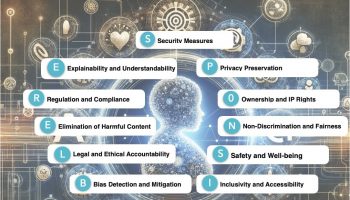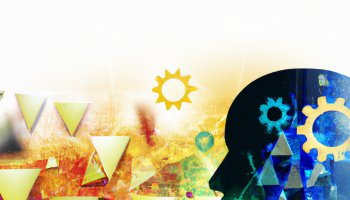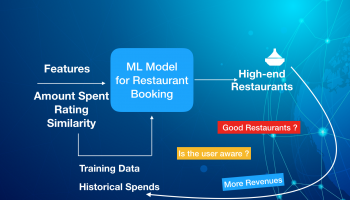The rapid evolution of generative AI, like GPT4 or Gemini, reveals both its power and the enduring challenge of bias. These advancements herald a new era of creativity and efficiency. However, they also spotlight the complex ways bias appears within AI systems, especially in generative technologies that mirror human creativity and subjectivity. This exploration ventures into the nuanced interplay between AI guardrails and human biases, scrutinizing the efficacy of these technological solutions in generative AI and pondering the complex landscape of human bias.
Understanding AI Guardrails
AI guardrails, initially conceptualized to safeguard AI systems from developing or perpetuating biases found in data or algorithms, are now evolving to address the unique challenges of generative AI. These include image and content generation, where bias can enter not only through data but also through how human diversity and cultural nuances are presented. In this context, guardrails extend to sophisticated algorithms ensuring fairness, detecting and correcting biases, and promoting diversity within the generated content. The aim is to foster AI systems that produce creative outputs without embedding or amplifying societal prejudices.
The Nature of Human Bias
Human bias, a deeply rooted phenomenon shaped by societal structures, cultural norms, and individual experiences, manifests in both overt and subtle forms. It influences perceptions, decisions, and actions, presenting a resilient challenge to unbiased AI—especially in generative AI where subjective content creation intersects with the broad spectrum of human diversity and cultural expression.
The Limitations of Technological Guardrails
Technological guardrails, while pivotal for mitigating biases within algorithms and datasets, confront inherent limitations in fully addressing human bias, especially with generative AI:
- Cultural and Diversity Considerations: Generative AI’s capacity to reflect diverse human experiences necessitates guardrails sensitive to cultural representation. For example, an image generator trained mostly on Western art styles risks perpetuating stereotypes if it cannot adequately represent diverse artistic traditions.
- Data Reflection of Society: Data used by AI systems, including generative AI, mirrors existing societal biases. While guardrails can adjust for known biases, changing the societal conditions that produce biased data is beyond their reach.
- Dynamic Nature of Bias: As societal norms evolve, new forms of bias emerge. This requires guardrails to adapt continuously, demanding a flexible and responsive approach to AI governance.
- Subtlety of Human Bias: Nuanced forms of bias influencing creative content may evade algorithmic fairness checks. This subtlety poses a significant challenge.
- Overreliance on Technical Solutions: Sole reliance on AI guardrails can lead to complacency, underestimating the critical role of human judgment and ongoing intervention in identifying and mitigating biases.
Evolving Beyond Our Biases: A Human Imperative
The endeavor to create unbiased AI systems invites us to embark on a parallel journey of self-evolution, to confront and transcend our own biases. Our world, rich in diversity yet fraught with prejudice, offers a mirror to the biases AI is often criticized for. This juxtaposition highlights an opportunity for growth.
The expectation for AI to deliver fairness and objectivity underscores a deeper aspiration for a society that embodies these values. However, as creators and users of AI, we embody the very complexities and contradictions we seek to resolve. This realization compels us to look within—at the biases shaped by societal norms, cultural contexts, and personal experiences that AI systems reflect and amplify.
This journey of evolving beyond our biases necessitates a commitment to introspection and change. It requires us to engage with perspectives different from our own, to challenge our assumptions, and to cultivate empathy and understanding. As we navigate this path, we enhance our capacity to develop more equitable AI systems and contribute to the creation of a more just and inclusive society.
Moving Forward: A Holistic Approach
Addressing AI and human bias demands a holistic strategy that encompasses technological solutions, education, diversity, ethical governance, and regulatory frameworks at global and local levels. Here’s how:
- Inclusive Education and Awareness: Central to unraveling biases is an education system that critically examines biases in cultural narratives, media, and learning materials. Expanding bias awareness across all educational levels can cultivate a society equipped to identify and challenge biases in AI and beyond.
- Diverse and Inclusive Development Teams: The diversity of AI development teams is fundamental to creating equitable AI systems. A broad spectrum of perspectives, including those from underrepresented groups, enriches the AI development process, enhancing the technology’s ability to serve a global population.
- Ethical Oversight and Continuous Learning: Establishing ethical oversight bodies with diverse representation ensures that AI projects adhere to ethical standards. These bodies should promote continuous learning, adapting to emerging insights about biases and their impacts on society.
- Public Engagement and Policy Advocacy: Active dialogue with the public about AI’s role in society encourages shared responsibility for ethical AI development. Advocating for policies that enforce fairness and equity in AI at both local and global levels is crucial for ensuring that AI technologies benefit all segments of society.
- Regulations and Conformance: Implementing regulations that enforce the ethical development and deployment of AI is critical. These regulations should encompass global standards to ensure consistency and fairness in AI applications worldwide, while also allowing for local adaptations to respect cultural and societal nuances. Governance frameworks must include mechanisms for monitoring compliance and enforcing accountability for AI systems that fail to meet ethical and fairness standards.
- Personal and Societal Transformation: Beyond technological and regulatory measures, personal commitment to recognizing and addressing our biases is vital. This transformation, supported by education and societal engagement, paves the way for more equitable AI and a more inclusive society.
Conclusion
Our collective journey towards minimizing bias in AI systems is deeply interconnected with our pursuit of a more equitable society. Embracing a holistic approach that includes comprehensive educational efforts, fostering diversity, ensuring ethical oversight, engaging in public discourse, and establishing robust regulatory frameworks is essential. By integrating these strategies with a commitment to personal and societal transformation, we can advance toward a future where AI technologies are not only innovative but also inclusive and fair. Through global and local governance, we can ensure that AI serves the diverse tapestry of human society, reflecting our highest aspirations for equity and understanding.



